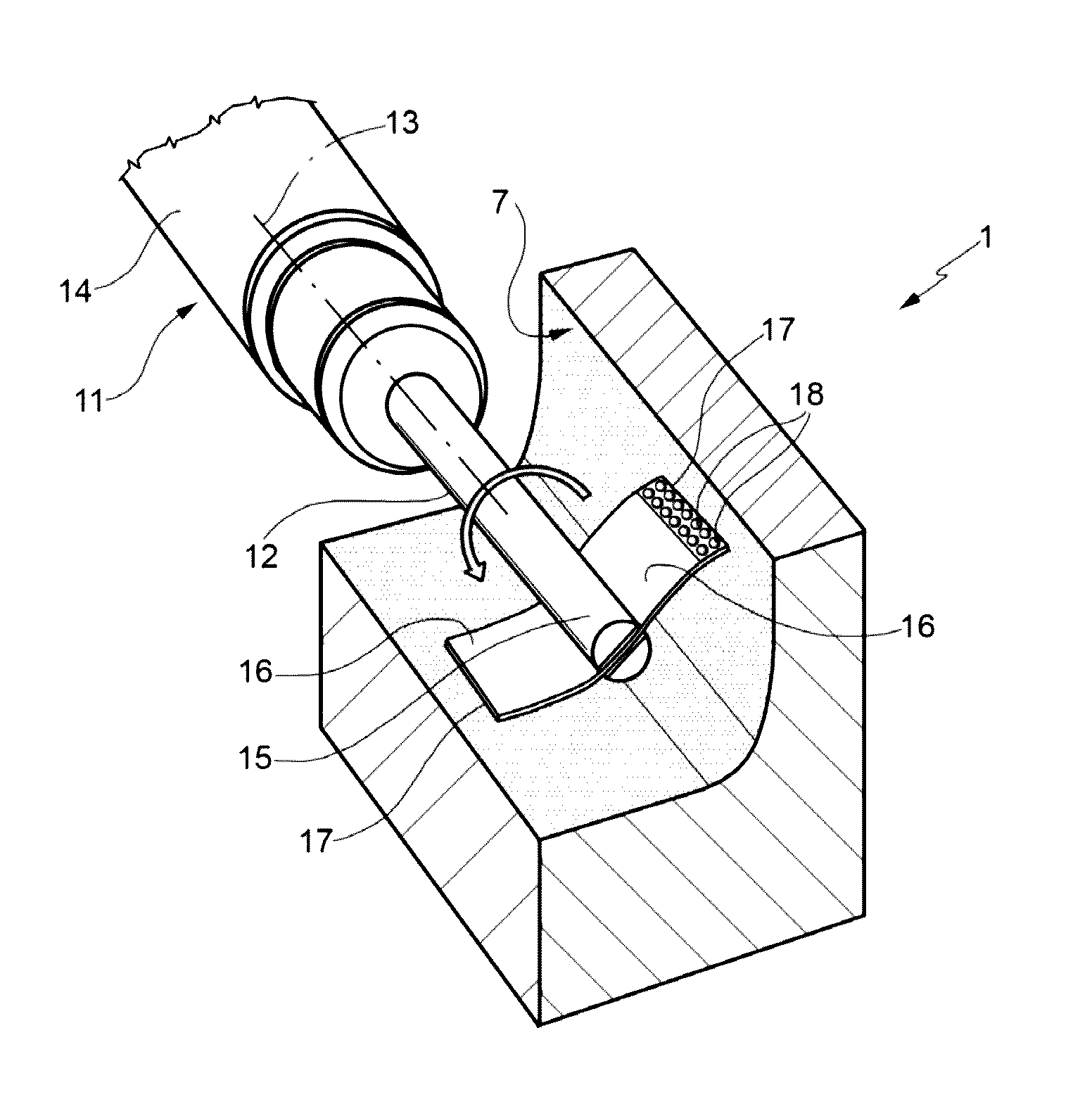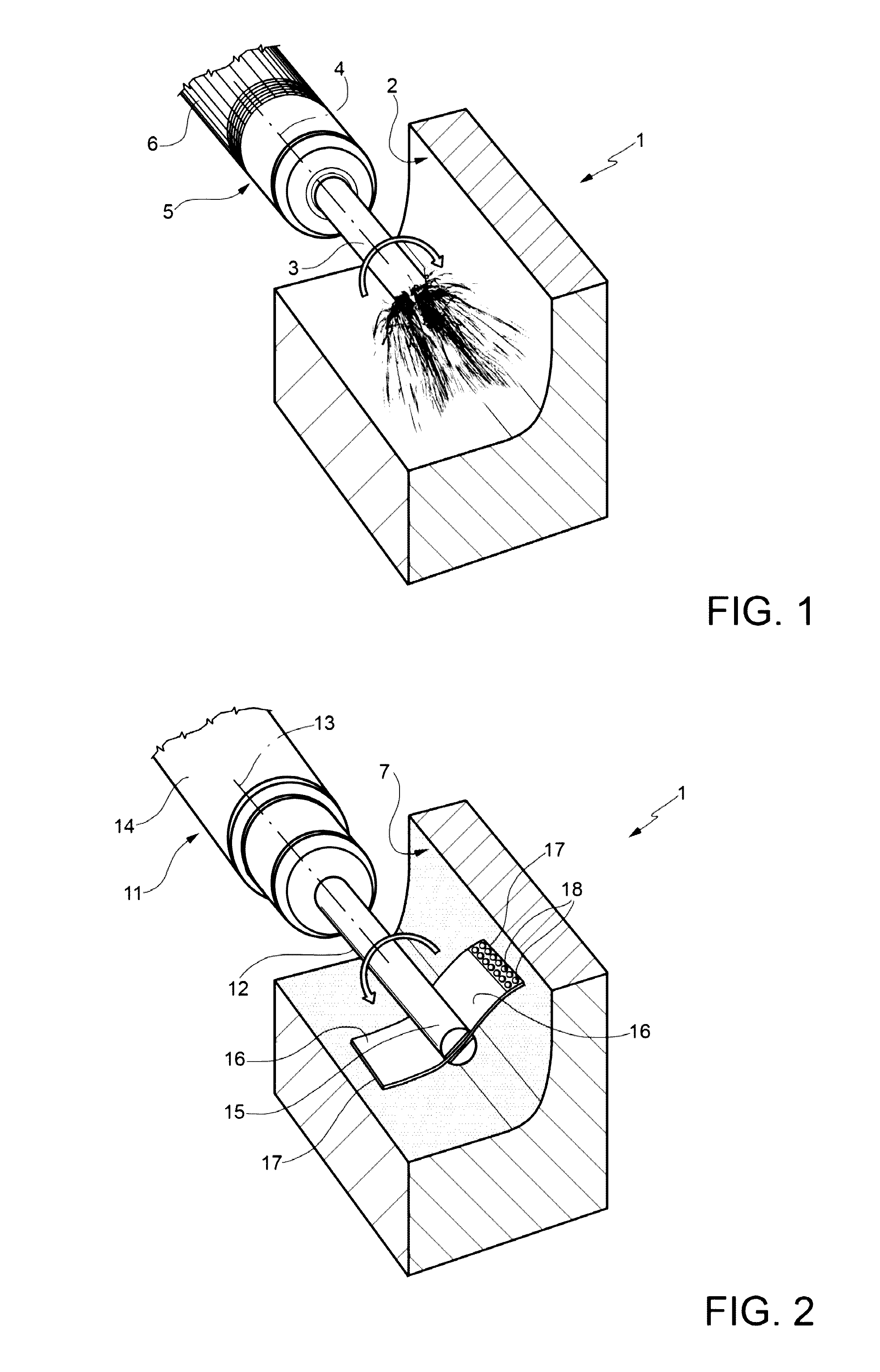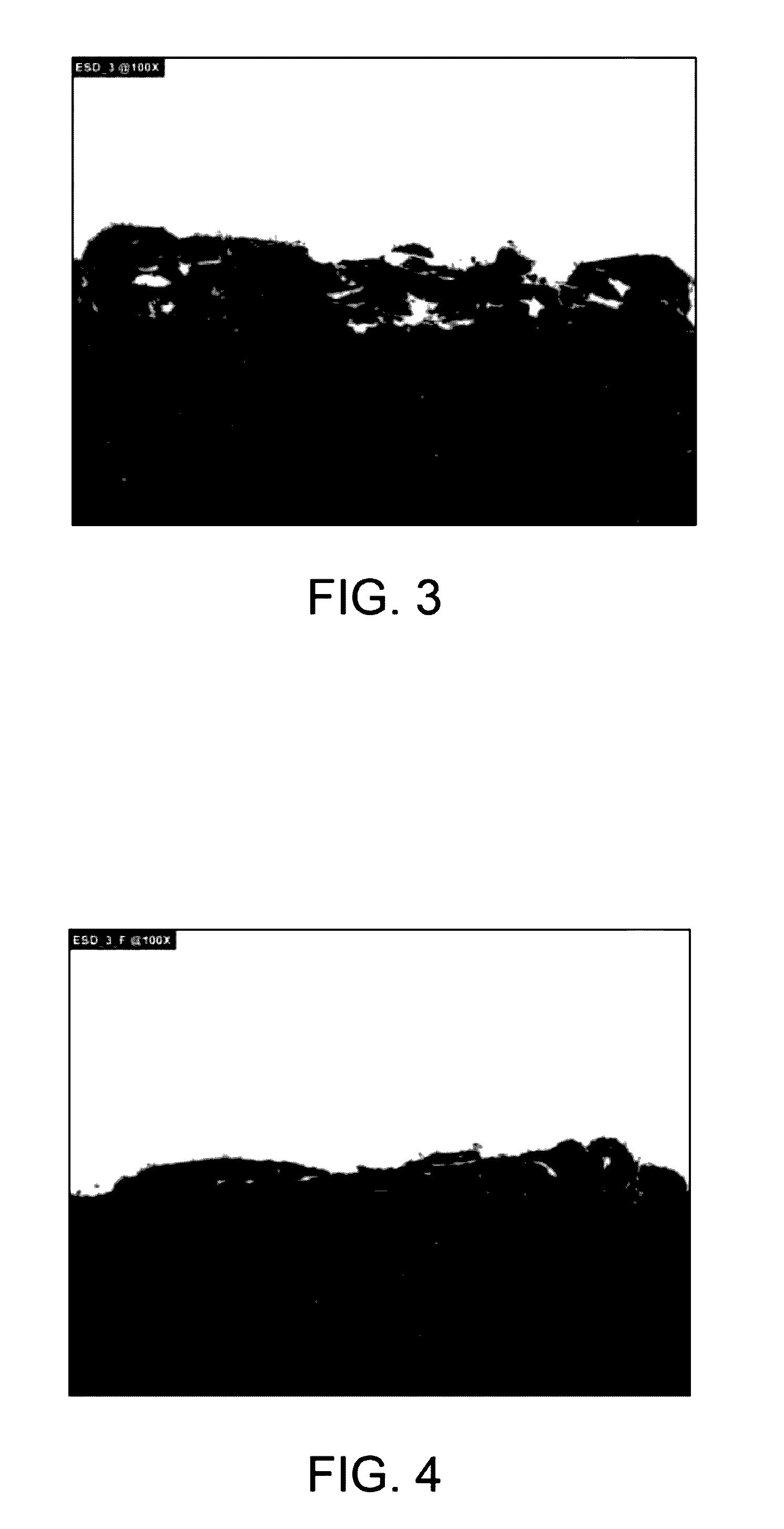Method for repairing a piece
a technology for repairing parts and parts, applied in the field of methods for repairing parts, can solve the problems of uneven deposited material uneven deposited material for the entire extension of the deposited material, etc., and achieve the effect of simple and inexpensiv
- Summary
- Abstract
- Description
- Claims
- Application Information
AI Technical Summary
Benefits of technology
Problems solved by technology
Method used
Image
Examples
Embodiment Construction
[0015]With reference to FIG. 1, the number 1 denotes, in its entirety, a piece (partially shown) having a surface 2 onto which the material must be deposited, since the surface 2 is a worn or damaged surface, and must therefore be restored to its original dimensions and shape. In general, the material deposited is the same as the original material of the substratum to be repaired, defined by the piece 1. In particular cases, the deposited material may be different to the original material forming the surface 2.
[0016]The material is deposited with successive runs on the surface 2, by means of a technique known as “electro-spark deposition”, also indicated as ESD. With this technique, the material is transferred in drops onto the surface 2 from an electrode 3, generating a pulsating electric current, which creates sparks between the piece 1 and said electrode, while a protective atmosphere is preferably formed (for example an argon atmosphere) around the working area.
[0017]The materia...
PUM
| Property | Measurement | Unit |
|---|---|---|
| distance | aaaaa | aaaaa |
| distance | aaaaa | aaaaa |
| flexible | aaaaa | aaaaa |
Abstract
Description
Claims
Application Information
 Login to View More
Login to View More - R&D
- Intellectual Property
- Life Sciences
- Materials
- Tech Scout
- Unparalleled Data Quality
- Higher Quality Content
- 60% Fewer Hallucinations
Browse by: Latest US Patents, China's latest patents, Technical Efficacy Thesaurus, Application Domain, Technology Topic, Popular Technical Reports.
© 2025 PatSnap. All rights reserved.Legal|Privacy policy|Modern Slavery Act Transparency Statement|Sitemap|About US| Contact US: help@patsnap.com



